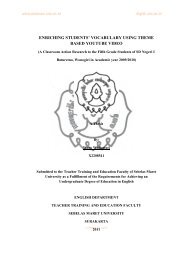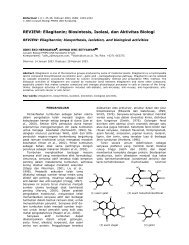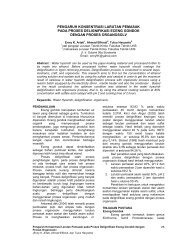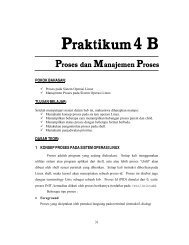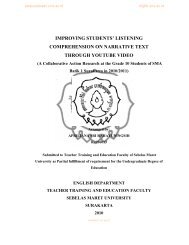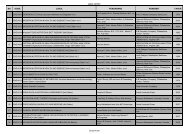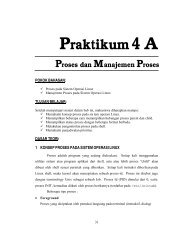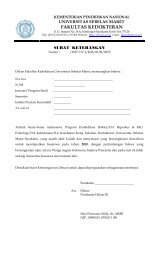IMPROVING STUDENTS' SPEAKING PROFICIENCY USING GAMES
IMPROVING STUDENTS' SPEAKING PROFICIENCY USING GAMES
IMPROVING STUDENTS' SPEAKING PROFICIENCY USING GAMES
Create successful ePaper yourself
Turn your PDF publications into a flip-book with our unique Google optimized e-Paper software.
1). InhibitionUnlike reading, writing and listening activities, speaking requires some realtime exposures to an audience. Learners are often inhibited about trying to saythings in a foreign language in the classroom, such as worried about mistakes,fearful of criticism, or shy of the attention that their speech attracts.2). The lack of theme to be spokenSome learners get the difficulties in thinking of anything to say, they have nomotivation to express themselves beyond the guilty feeling that they should bespeaking.3). The low participationOnly one participant can talk at a time if he or she is to be heard. In a largegroup, this means that each one will have only very little time to talk. Thisproblem is compounded by the tendency of some learners to dominate, whileothers speak very little or not at all.4). The use of mother tongueIn a number of classes, the learners share the same mother tongue. They maytend to use it because of some reasons. Firstly, it is easier. Secondly, it feelsunnatural to speak to one another in a foreign language. The last, they feel less“exposed” if they are speaking their mother tongue. If they are talking insmall groups, it can be quite difficult to keep using the target language.d. Solutions for the Problems of Speaking ActivitiesThere are some solutions which can be selected to overcome the problems inspeaking activity (Ur, 1996:121-122). These are:xxix



